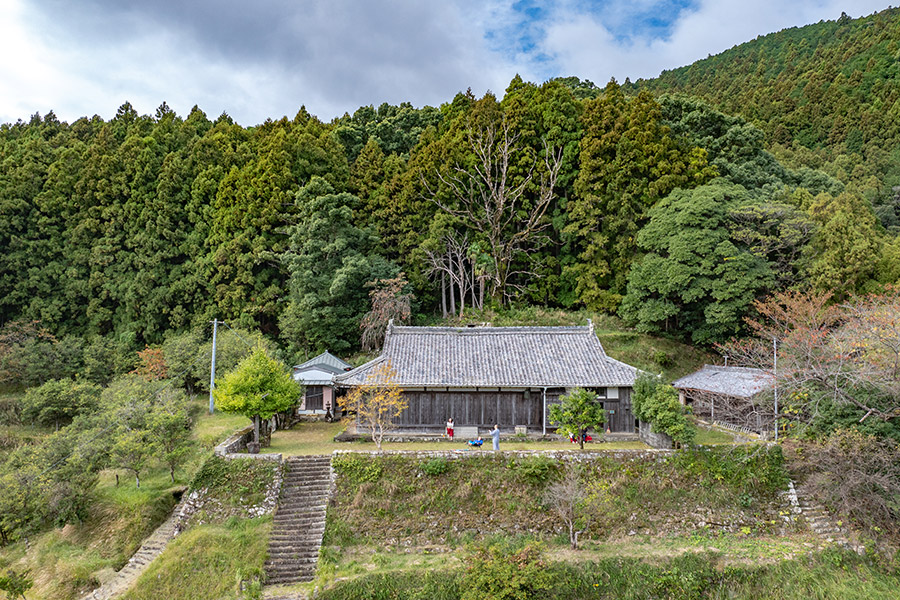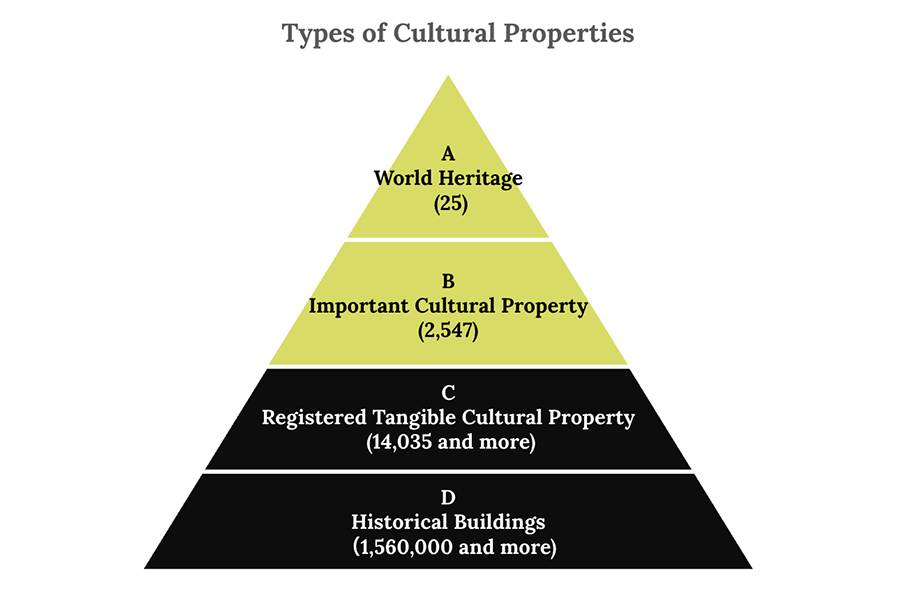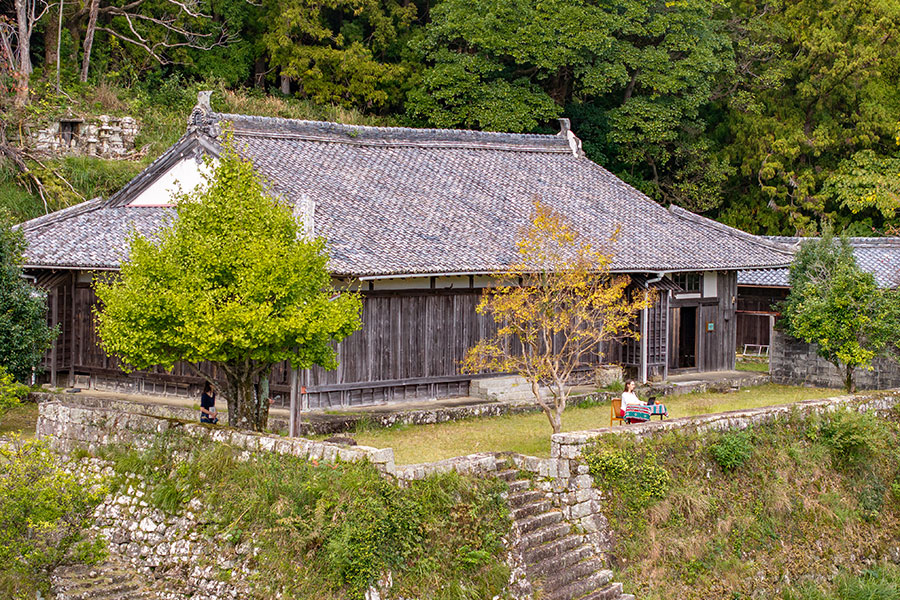Japan’s approach to cultural preservation is defined by a robust legal framework and a nuanced classification of cultural assets. At the heart of this framework lies the distinction between Registered Cultural Properties (登録有形文化財) and Important Cultural Properties (重要文化財). These two categories represent different levels of recognition, preservation obligations, and opportunities for utilization, forming the basis of Japan’s efforts to safeguard and activate its built heritage.
Classification and Registration: A Two-Tiered System
Registered Cultural Properties are designated under the 1996 amendment to the Law for the Protection of Cultural Properties as a flexible system to protect a wide range of structures with historical or architectural value. The process of registration is relatively straightforward: owners submit an application, which is reviewed and approved by the Agency for Cultural Affairs. Registration offers visibility and protection, but allows for more adaptive use and renovation compared to the more stringent requirements for Important Cultural Properties [1].

In contrast, Important Cultural Properties are designated by the national government based on their outstanding historical, artistic, or architectural significance. These assets are rigorously assessed through expert committees and, once designated, become subject to strict regulations regarding restoration, alteration, and even repair methods [2].

Grants and Support Mechanisms
Both categories are eligible for government support, but the scale and conditions vary. Registered Cultural Properties can receive grants covering up to 50% of conservation and utilization costs. These grants are intended to incentivize private ownership and sustainable use [1]. Important Cultural Properties, due to their higher status, receive more substantial financial support, sometimes covering up to 85% of restoration costs, particularly when structural repairs are necessary [2].
This layered support system ensures a balance between preserving irreplaceable assets and encouraging the active use of heritage buildings in everyday life.
Adaptive Reuse and Contemporary Applications
Japan has increasingly embraced the idea of utilization (活用) as a key strategy in heritage preservation. Adaptive reuse not only protects buildings but also breathes new life into them.
One notable example of a Registered Cultural Property being reactivated is the 170-Year-Old Temple in Wakayama Prefecture, which has recently become part of an innovative preservation project by PlanetDAO, which engages investors to support restoration and reactivation as rural retreats and community hubs.

Other examples from the Agency for Cultural Affairs include the transformation of the 旧中込学校 (Former Nakagomi School) into an educational tourism site and the adaptation of 旧山本家住宅 (Former Yamamoto Residence) into a community space [1].
On the other hand, Important Cultural Properties often become prestigious landmarks. The Tokyo Station Hotel, integrated into the original Marunouchi Station Building (an Important Cultural Property), preserves Meiji-era architectural elements while functioning as a luxury hotel. Similarly, the Former Nara Prison, a rare example of Western-style prison architecture from the Meiji period, has been repurposed into a high-end hotel facility and museum by Hoshino Resorts, blending preservation with tourism and public education [2][3][4][5][6].
Conclusion
Japan’s dual-tier classification system allows for a dynamic balance between conservation and innovation. While Important Cultural Properties are treated as national treasures with stringent protection, Registered Cultural Properties enable broader participation in preservation by allowing more flexibility in use and management. As demonstrated by projects like The 170-Year-Old Temple and the adaptive reuse of Tokyo Station Hotel or Nara Kangoku, Japan continues to lead in heritage preservation by ensuring its cultural assets remain not just seen, but lived in and experienced.
References
- Agency for Cultural Affairs. (n.d.). Registered Tangible Cultural Properties Pamphlet [PDF]
- Agency for Cultural Affairs. (n.d.). Important Cultural Properties Pamphlet [PDF]
- Ministry of Land, Infrastructure, Transport and Tourism (MLIT). (2022). Press Release: Nara Prison Hotel Project [PDF]
- Tokyo Station Hotel. (n.d.). Our Hotel.
- Former Nara Prison. (n.d.)
- Hoshino Resorts. (2023, September). Former Nara Prison to open as Hoshinoya Nara Prison in spring 2026